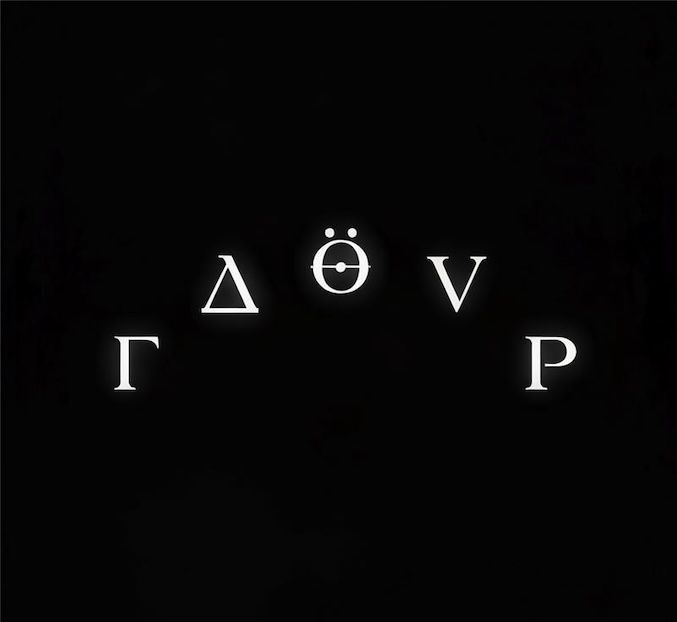There are five primary Greeks that each measure sensitivity to a key variable:
Delta (Δ)
Delta is directional exposure. It estimates how much an option’s price should change for a small move in the underlying. Calls have positive delta and benefit from rises. Puts have negative delta and benefit from declines. At-the-money is near 0.50 in magnitude and trends toward 1.00 or 0.00 as options move deeper in or out of the money.
- Example: With BTC around $111,556, a 0.40-delta call is expected to gain about $400 for a $1,000 rise in BTC per 1 BTC equivalent notional. A -0.40-delta put would gain about $400 for a $1,000 drop, all else equal.
- Practical Context: On Thalex, manage net portfolio delta with perps or dated futures when you want to isolate volatility or carry. If you have a view, keep the sign and size of delta intentional; if you do not, keep it close to neutral and let theta or vega do the work.
You can learn more about delta and delta hedging in our article
Gamma (Γ)
Gamma is how fast delta changes as price moves. Long options are long gamma, so favorable moves add delta in your favor and unfavorable moves reduce it, which naturally slows losses. Gamma is largest near the strike and increases as expiry approaches.
- Example: Long an at-the-money 1-week BTC call. A $1,000 pop can push delta from about 0.50 toward 0.60, so the position "grabs" upside faster on the next increment. A $1,000 drop does the opposite and softens losses.
- Practical Context: Pair long gamma with intraday delta hedges in Thalex perps or near futures to turn realized swings into PnL. Widen hedge bands in trends, tighten them in chop. If gamma feels too “jumpy,” reduce tenor or size.
Theta (Θ)
Theta is time decay. It estimates how much extrinsic value an option loses each day if nothing else changes. Sellers harvest theta. Buyers must outrun it with movement or a rise in implied volatility. Theta accelerates into expiry and is highest near the money.
- Example: A weekly BTC straddle carrying −$150 per day needs enough realized variance to beat that daily carry over the week; if it does not, the position should be smaller or closed.
- Practical Context: Treat daily theta as a budget. Choose tenor to match your horizon and catalysts. If you want long optionality but less decay, use spreads or calendars to share the carry.
Vega (ν)
Vega is sensitivity to implied volatility. Long options benefit when implied volatility rises. Short options benefit when it falls. Vega is largest at the money and higher for longer expiries because there is more time for uncertainty to matter.
- Example: If a BTC call has vega $90, a 1-point rise in implied volatility adds about $90 to the option; a 5-point rise adds about $450, all else equal.
- Practical Context: On Thalex, compare implied to your expectation for realized movement and event risk. Own premium when implied looks cheap to what is likely to happen. Sell or structure defined-risk shorts when implied looks rich.
Rho (ρ)
Rho is sensitivity to interest rates. It matters most for longer-dated options and larger rate shifts. In crypto it is usually secondary but not zero.
- Example: A far-dated BTC call with rho $6 gains about $6 for a 1 percentage point rate increase, all else equal.
- Practical context: Include rho when you stretch maturities or price long-dated spreads. For short-dated trades in crypto, it is typically a minor contributor.
Minor Greeks
Minor Greeks explain why risk drifts even when spot looks quiet. They capture how delta, gamma, and vega evolve with time and with changes in the volatility surface. They become important around catalysts, on larger books, and when managing neutral or near-neutral portfolios. Use them to plan hedge frequency and to understand why a “flat” book can pick up bias into expiry or on skew shifts.
- Vanna: Sensitivity of delta to changes in implied volatility. If implied volatility rises into an event, a long straddle’s delta can drift even if spot is still. Helpful for managing delta in skew and for anticipating drift when you are long gamma through events.
- Charm: Change in delta as time passes with price held constant. A near-dated call’s delta “bleeds” lower overnight if price is unchanged. Explains why delta-neutral books pick up bias into expiry and need small rebalances.
- Vomma: Sensitivity of vega to changes in implied volatility. Into a listing or macro print, a long-vega position can see its vega grow as implied rises, amplifying gains. Use with vega to judge how much your premium risk could expand into events.
- Zomma: Sensitivity of gamma to changes in implied volatility. A surface shift can make gamma more reactive, forcing tighter hedge bands. Guides how “jumpy” your delta hedging might become if implied volatility moves.
- Color: Change in gamma as time passes. A 3-day ATM option may see gamma rise sharply by tomorrow even if spot is flat. Plan hedge frequency through the life of a trade; expect more rebalancing as color increases.
- Lesser Used Greeks: Lambda: elasticity. Speed: gamma slope. Veta: vega decay. Ultima: vomma curvature. Vera: rho-vol. Epsilon: dividend yields (equities and some cashflowing tokens).
The Greeks have a direct impact on trading positions; they are a balance of competing forces that can target specific market conditions to allow for precise risk management and strategy selection.
